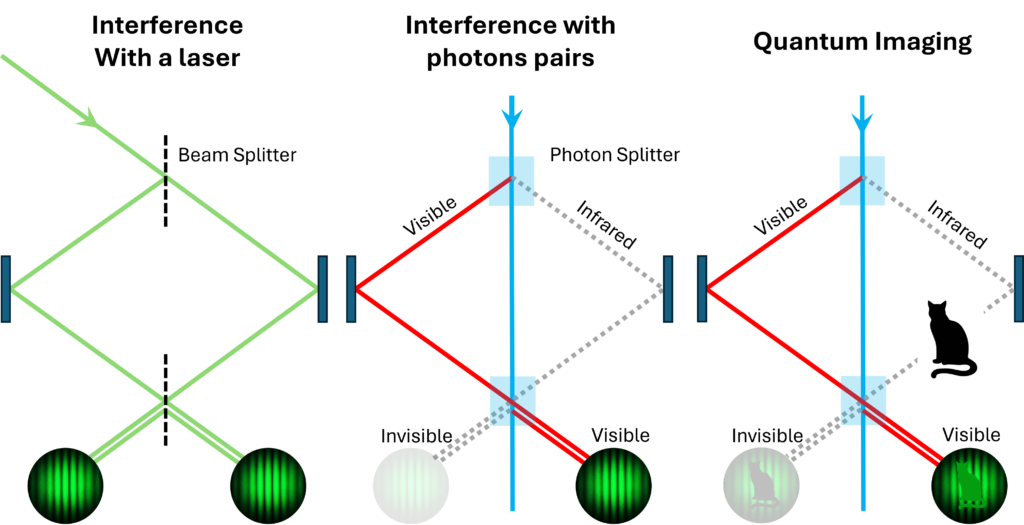Splitting photons in two
Imagine you have a special crystal, and you shine a laser beam (which is made of particles of light called photons) through it. Sometimes, one of those photons hits the crystal in just the right way, and it splits into two new photons.
These two new photons together carry the same total energy as the original one, but they each have less energy — like one big piece breaking into two smaller ones. Nature ensures that the energy before the photon is split is the same as afterwards. The photons also have a small amount of momentum, and this is also conserved following the splitting process.
The interesting thing is, these two new photons are linked in a special way, called entanglement. As the photons are made in pairs, their energies and the times when they are created are said to be entangled.

The interference patterns described in the [which path identity] section, are dependent on there being two possibilities that are impossible to distinguish between. So what happens if – instead of using two slits or two separate paths for our photons to travel through – our two possibilities are these crystals producing photon pairs as described above? If the two crystals are producing identical pairs of photons, then we will see the same interference patterns. And again any differences between the two will disrupt the pattern. For example, if one of the photons from one of the crystals is blocked, then one crystal is producing one photon while the other is producing pairs, and so they are no longer identical and the pattern disappears. The clever part is that the photons in a pair don’t have to be identical as long as the two pairs are. In the EntangleCam, our pairs are generated so that one photon is infrared and the other is visible. A disturbance to one of the infrared photons now causes a change in the patterns on the visible photons! This allows us to move an image from the infrared region to the visible, without ever having to detect any infrared photons. So with the Entanglecam, we no longer need to rely on thermal imaging cameras to detect the molecular vibrations!

